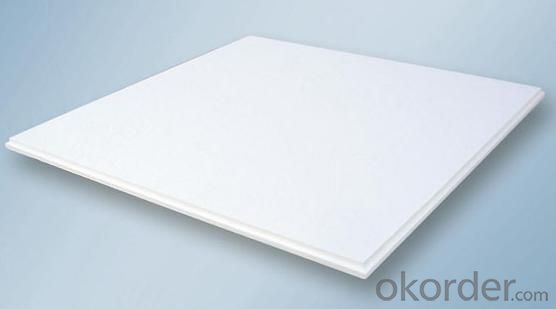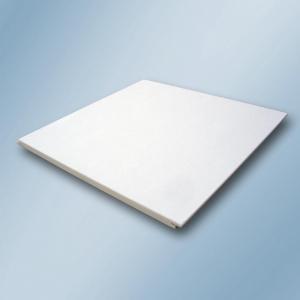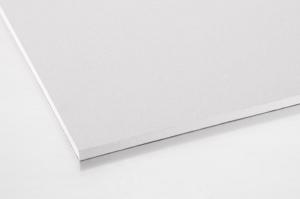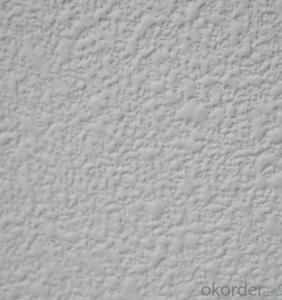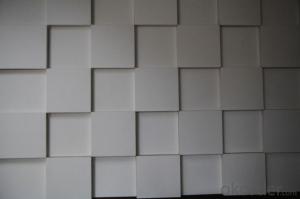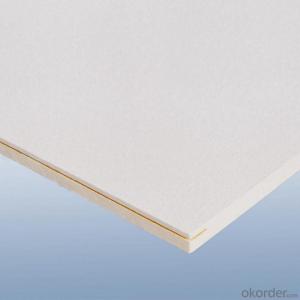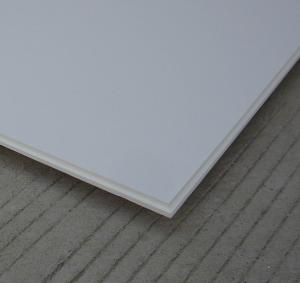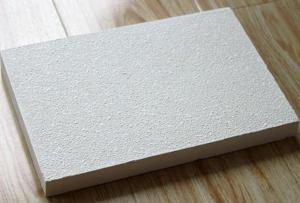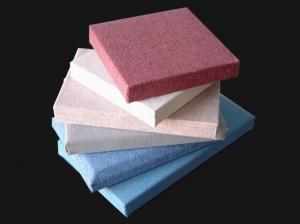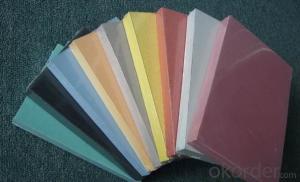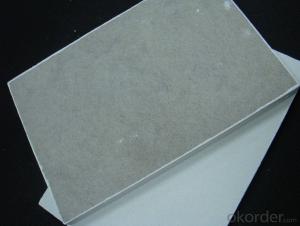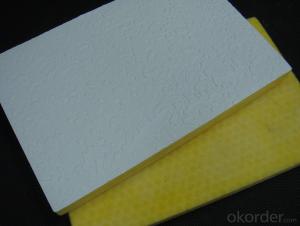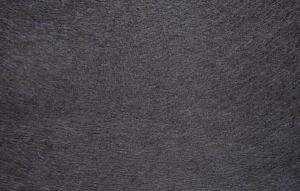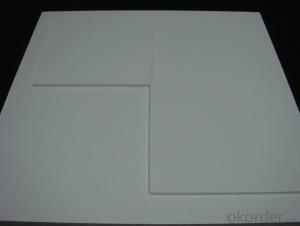Fiberglass Ceiling Tiles Home Depot - Acoustic Fiberglass Ceiling Well Quality 20mm
- Loading Port:
- Shanghai
- Payment Terms:
- TT OR LC
- Min Order Qty:
- 3000 m²
- Supply Capability:
- 10000 m²/month
OKorder Service Pledge
OKorder Financial Service
You Might Also Like
Fiberglass Ceiling
The tiles are manufactured from high density fiberglass wool.The visible face has a decorative fiberglass tissue and the back of the tile is covered with normal tissue.The four edges of the tile are sealed and have grooves. It can be jointed together without suspended system. The tiles will cover the suspension system after installation. They are are suitable for loe flap ceiling space and concrete-made, wooded-made or gymsum ceiling.
Installation method:
Use screw to fix the smooth roof. The tiles can be connected after making grooves on each two jointed edges.
Tiles are easy to trim and install
Both inches and metric grids are available
Main Characteristic:
Non-combustible
No sagging,wrapping or delaminating
Green building material
Excellent sound absorption
Application:
Halls,classrooms,offices,shopping centers.etc.
Acoustic fiberglass ceiling contains a better perfomance in tension strong, light weight, so it is easy to trim and install for interior decoration, with T-grids for suspension system or glue, nail or good material could come with fiberglass ceiling baord. Thus an excellent artical work need a high quality acoustic ceiling board, also high quality.
Energysaving is a trend for our 21' era, new product like fiberglass ceiling tile could in place of traditional products one day. Which depends on functional characters: little deflection of geometry dimention, no radiocative property, specific activity of 226Ra: Ira ≤1.0 and specific activity of 226 Ra 232 Th, 40 K: Ir ≤ 1.3. Both products and packages can be recycled.
- Q: If you were a single woman with no man around, how would you fix a hole in the ceiling from water damage? And the roof? On a budget. Is this possible for a small woman to do this job by herself? Can someone give me step by step instructions? Photo of the damage attatched.
- First take a ruler and pencil, make a square out line. try and find the studs and ONLY cut to the middle of the studs with a Razor Knife, You will need something to screw the new peace of sheet rock on to, so don't go over the stud. Once you get old peace down, you will more than likely have to do some repair to your plumbing or ceiling, as this is leaking somewhere. Look up Youtube for further instructions. Other person above has a good idea on joint compound.
- Q: Some people think that do not need to check the color of magnesium chloride, you can know its color, why? Mg (OH) 2 white MgCO3 white Mg (NO3) 2 white Mg3N2 light yellow MgCl2 white From the above to illustrate the problem ...
- Would you like to say that the Mg salt is all white?
- Q: Due to circumstances too complicated to go into, my husband and I ended up trying to finish the drywall on our kitchen ceiling ourselves. We were in a bind and couldn't get a contractor, so we used compound, taped, sanded, primed and painted the ceiling 2 weeks ago. In some places the tape has bubbled, in others it's clearly visable under the tape, the ceiling looks, well, bad.My question is: how best to fix it? Do we sand down to the original tape (please, nononono!) and redo it? Is there a textured paint we could use? Pressed tin panels (country house)? We don't have a lot to spend on the project, so any advice would be appreciated! (Yes, I know we messed-up when we painted)
- I think you should cut your losses and hire the contractor, at least for advice on how to fix it. You found out the hard way that people hire professionals for a reason, these projects are not as easy as they seem. . Do yourself a favor and don't waste anymore time or money.
- Q: Now a lot of people with rock wool ceiling, rock wool ceiling what is special?
- Easy installation: excellent sound grams ceiling can be fast, easy to install in place. Due to the lighter weight, easy handling and transportation, the product will not produce dust when cutting and installing, so it will not affect the health of the installer. After installation, the ceiling surface can be cleaned with a vacuum cleaner or a wet cloth. When using this ceiling, you can also access the various facilities that are hidden behind the ceiling panel, such as HVAC equipment.
- Q: What is the solvent content of the insulation board?
- Insulation board of different materials, solvent content is also different. First, the external wall insulation materials: 1, silicate insulation material 2, ceramic insulation material 3, powder polystyrene particles 4, steel mesh mining cement foam board (Shu music board) 5, extruded plate XPS 6, hard foam polyurethane on-site spraying, foam polyurethane insulation Plate 7, foam cement board 8, A-class inorganic fire insulation mortar, 9 foam glass, 10 glass wool, 11 rock wool, 12 East far DY inorganic reactive insulation system Second, the roofing materials: 1, ceramic insulation board 2, xps extruded board 3, EPS foam board 4, perlite and perlite bricks 5, vermiculite and vermiculite brick 6, foam cement Third, the heat, air-conditioning materials: phenolic resin, polyurethane waterproof insulation integration, rubber sponge, polyethylene, polystyrene foam, glass wool, rock wool Fourth, steel materials: polystyrene, extruded board, polyurethane board, glass wool felt and so on. Five inorganic insulation materials: foam cement, YT inorganic reactive wall insulation materials, DY inorganic reactive insulation system, air gel felt.
- Q: Cast-in-place floor (ceiling position) Reinforcement protective layer is not enough, local steel exposed. I intend to use epoxy resin mortar
- If not skilled, epoxy resin mortar is not good to paint. And grass-roots bonding is a problem, the level of skilled workers is also a problem. Suggest, 1, steel rust to be completely, or the same burst open; 2, carbon fiber reinforcement approach, that is, epoxy resin plus fiberglass cloth, professional construction. Quality assurance, the effect is much better than their own configuration of epoxy resin mortar. In addition, crack prevention. This method of handling is a formal approach that can be changed by design. 3, the surface putty putty, it is finished.
- Q: Ceiling for light steel keel face coated gypsum board coated with white latex paint.
- 1, hanging keel check whether the good discharge of sewage pipes and so on and whether it is located in the bathroom upstairs bathroom humid position, if you do first do a waterproof; 2, should be selected when the weather is relatively dry when the closure plate; 3, the latex paint should also be relatively dry, and the gypsum board itself can not be damp; 4, the tidal atmosphere of indoor space attention to dehumidification
- Q: What are the characteristics of the use of fiberglass ceilings?
- It is characterized by high temperature, good flatness, smooth surface, no pits, thickness tolerance over the standard.
- Q: When I moved into my house the ceiling was cracked from the ceiling fan out to the walls in two directions. I don't want to put new wall board up and repairing the crack is not possible according to my Husband. What are some ways to cover the ceiling up?
- It's possible the crack is caused by someone/something in the attic, if that is above. If so, don't walk up there and crack should not occur again. If not an attic above, but another floor instead, it's possible that something/somebody heavy caused the crack. Lastly, it could be the floor joists/ceiling joists are insufficient to support the weight on them, including the cracked sheetrock. If this is true, you have a structural problem that will probably continue to cause overhead sheetrock cracks. However, repairing the present cracks is not that difficult. Best idea is to use a utility knife/box cutter to dig a shallow V shaped groove along the crack, then use joint compound and paper tape as with any sheetrock finish work. Another less messy option is to use fiberglass self-sticking mesh tape, sold for sheetrock finishing, and joint compound over that. Some practive to feather all edges is needed or the results could be as bad or worse than your cracks. If you just can't do any of the above, a thin bead of silicone caulk pressed into and along the crack, can mask the worst of the crack!
- Q: What would be a good cheap insulation for a basement ceiling or wall?
- fiberglass
Send your message to us
Fiberglass Ceiling Tiles Home Depot - Acoustic Fiberglass Ceiling Well Quality 20mm
- Loading Port:
- Shanghai
- Payment Terms:
- TT OR LC
- Min Order Qty:
- 3000 m²
- Supply Capability:
- 10000 m²/month
OKorder Service Pledge
OKorder Financial Service
Similar products
Hot products
Hot Searches
Related keywords



